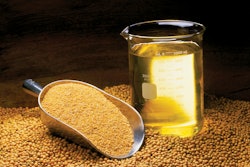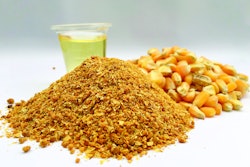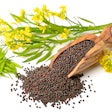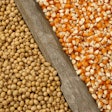
To help farmers in Ghana to increase soybean production, the government of Japan is providing substantial funding to the West African state’s whole soy production chain.
At the end of June, Ghana’s food and agriculture minister re-asserted the country’s ambition to become the top soybean exporter by the start of the next decade.
Minister Dr. Bryan Acheampong was launching a new program in the capital Accra titled, “Support to Soybean Development in Ghana,” reported GhanaWeb.
According to the minister, the West African state’s soybean harvest in 2022 amounted to approximately 250,000 metric tons (mt). Target output by 2030 is 1 million mt. This, he said, would help Ghana to grow its soy exports.
Already, the government has initiated its “Planting for Food and Jobs” program, a move that aims to increase domestic production of poultry and livestock, and thus support enhanced national food security.
Investment by Japanese government
Shortly after the minister’s announcement, he attended a special event launching a new initiative aimed at enhancing soybean production in Ghana.
At an event described as “groundbreaking,” the United Nations’ Food and Agriculture Organization (FAO) reported that the initiative will be funded by the government of Japan. Among those present were Acheampong and the Ambassador of Japan, H.E. Mochizuki Hisanobu.
Funding by Japan will amount to an estimated US$600,000, reported The B&FT Online.
Although Ghana has the potential to produce 700,000 mt of soybeans per year, FAO reports the country is achieving only about one-quarter of this volume. Issues holding back production have been identified as the less-than-optimum area planted with soy, and poor yields.
While 102,000 hectares (252,000 acres) of the country are planted with soy, 250,000 hectares are suitable for its cultivation. Soybean cultivation is mainly in the north of the country, and yields can be as low as 3 mt per hectare. Furthermore, the war in Ukraine and COVID-19 have exacerbated the situation, providing additional challenges that have held back the poultry, livestock, and aquaculture sectors in the recent past.
At the launch meeting, stakeholders in the soybean value chain discussed the project’s targets and activities.
Using this collaborative approach, it is hoped that the “Support to Soybean Development in Ghana” program will transform the nation’s soybean industry. As well as raising productivity of this crop, it aims to improve the livelihoods of smallholder farmers, as well as enhanced national food and nutrition security.
Soybean, feed production trends in Ghana
This year, the U.S. Department of Agriculture (USDA) Foreign Agricultural Service (FAS) identified favorable factors that indicated the prospect of a resurgence in the Ghanaian economy. Among these were assured support from creditors and the International Monetary Fund, as well as the wider international community.
For the current marketing season, FAS was forecasting soybean production in Ghana up by around 2% year-on-year at 260,000 mt after a similar increase in planted area. As a relatively new crop to the country, soybeans are grown mainly in the north of Ghana, and by smallholder farmers.
In contrast to the projected modest increase in the domestic harvest, FAS expects domestic consumption to be up by 10% at 215,000 mt for the current marketing year. Main drivers were identified as increase demand for food and food manufacturing, as well as from the aquaculture and poultry industries. There would also be demand for exports.
Soy processing is carried out by 13 main companies in Ghana. Together with small-scale processors, FAS estimates that less than 50% of national capacity is being utilized.
Figures from Ghana’s agriculture ministry cited by FAS show considerable year-to-year variation in the volume of imported animal feed ingredients.
Latest data for 2020 indicate a total imported volume of just over 152,000 mt, comprising around 64,700 mt of soybean, 54,600 mt of fishmeal and 32,910 mt of concentrate.
In 2018, however, the total was much higher at almost 559,000 mt. In that year, soybean imports alone amounted to 292,000 mt. Making up the balance were 150,000 mt of yellow corn, 100,000 mt of concentrate and 16,000 mt of premix.
This year, the government of Ghana announced it was investing around US$540 million to improve national self-sufficiency in poultry production.













